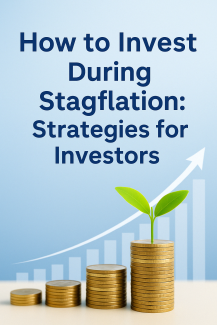
Stagflation: It’s Gotten Riskier to Be a Long-Term Investor?
Stagflation is a prolonged period of high inflation, slow economic growth, and rising unemployment. The last major stagflationary period occurred from 1973 to 1982. Over that nearly 10-year span, the S&P 500 delivered an average annual return of 6.8%—not terrible, but far from the double-digit growth investors had grown used to.
I’m glad this topic is starting to make headlines. I believe we’re either headed toward a similar period—or may already be in the early stages.
So the big question becomes:
If we don’t see strong market returns in the next five years, what should I do as an investor?
Set Expectations & Focus on Fundamentals
If we can't depend on a healthy, reliable market, then it’s time to focus on what you can control:
✅ Build strong cash flow
✅ Pay down debt
✅ Increase your emergency fund
✅ Hold reserves so you can take advantage of opportunities (real estate, businesses, stocks, etc.)
In times of economic strain, those with margin win. Being prepared financially allows you to act while others are retreating.
What Should You Do With Your Investments?
If you’re younger and have a long time horizon (10+ years), don’t let headlines scare you off. Even during the last stagflation period, 1975 saw a 31% return, and 1976 saw 19%. We can’t predict when the rebounds will come, so the best strategy is often to stay disciplined, consistent, and invested.
If you’re nearing retirement, volatility can hit harder. This might be a good time to review your current positions, reduce risk, and ensure your portfolio matches your timeline and income needs.
📥 Want help getting started?
Click below to download our Retirement Readiness Checklist. Someone from our team will be in touch soon.
[Retirement Readiness Checklist]
Disclaimer: This is for educational purposes only and should not be considered personal financial advice. Past performance does not guarantee future results.
Where to learn more, take a look at these articles as well.

